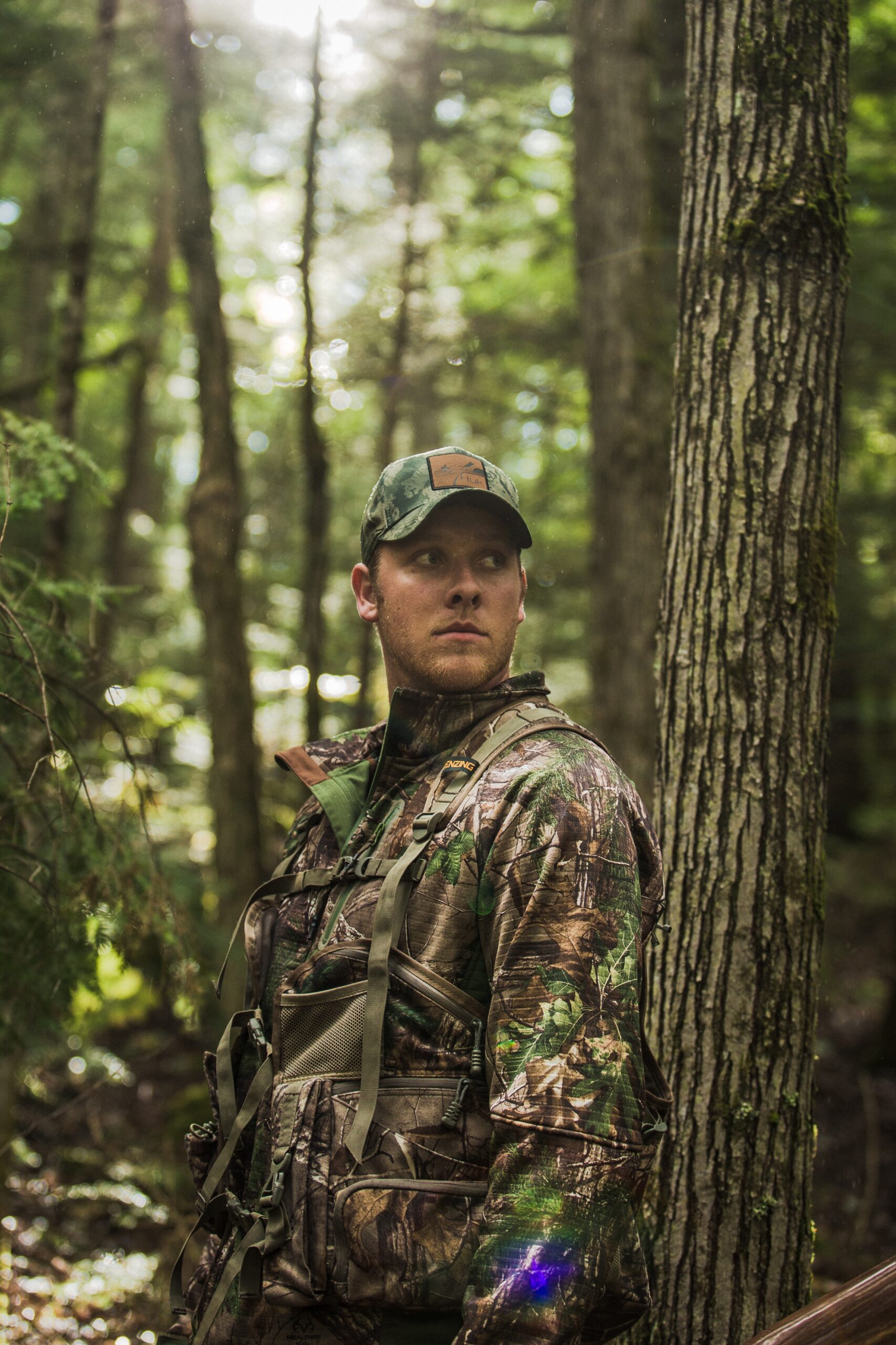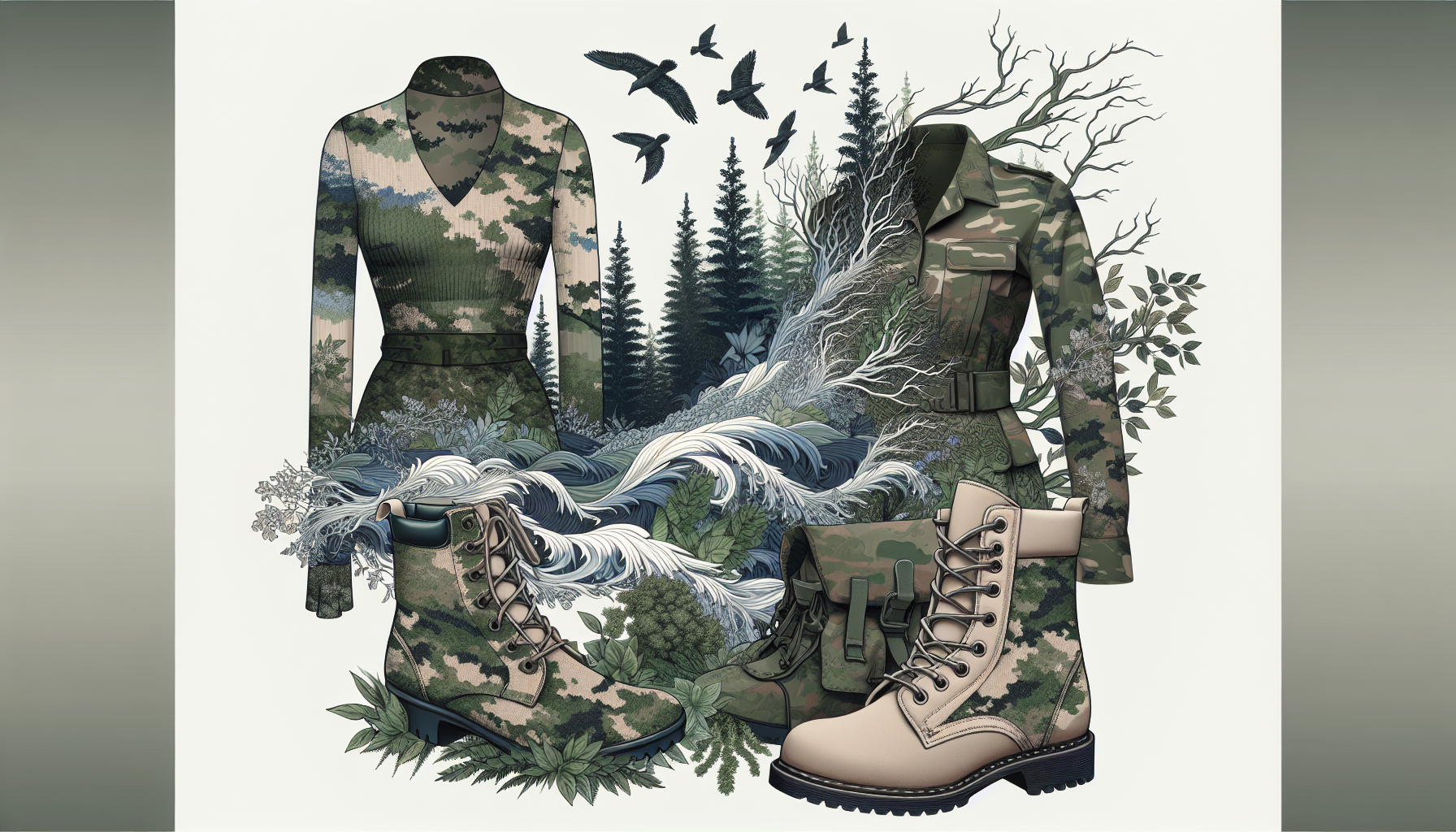Have you ever wondered why people wear camouflage clothing? Is it because they truly need it for its intended purpose or is it just for the fashionable and trendy look? In this article, we will explore the reasons behind the popularity of camouflage clothing and try to understand whether people choose it for practicality or purely for its aesthetic appeal. So, let’s dive into the fascinating world of camouflage fashion and uncover the motivations behind this trend!
Understanding the Original Purpose of Camouflage Clothing
Introduction to the military purpose of camouflage clothing
Camouflage clothing was originally designed with a specific military purpose in mind. Its primary objective is to conceal and blend in with the surrounding environment, making it difficult for the enemy to detect and target individuals wearing it. By effectively breaking up the outline of the human body and mimicking the patterns and colors of the natural surroundings, camouflage clothing provides soldiers with a tactical advantage on the battlefield. It helps them blend in with their surroundings, making it harder for the enemy to spot them and increasing their chances of survival.
How camouflage contributes to tactical operations
As an essential component of military strategy, camouflage clothing plays a crucial role in enhancing the effectiveness and success of tactical operations. By helping soldiers remain hidden and undetected, it allows them to observe and gather vital intelligence, ambush enemies, and execute surprise attacks. Moreover, it aids in protecting soldiers from becoming easy targets for snipers or enemy fire. The ability to blend into different terrains and environments enables military personnel to maneuver stealthily, maintain the element of surprise, and gain tactical advantages over adversaries.
How Camouflage Clothing Made its Way Into Fashion
Historical integration of military attire into everyday fashion
Over the years, military attire, including camouflage clothing, has become an integral part of everyday fashion. This integration can be traced back to various historical moments when military uniforms and styles were adapted for civilian wear. Following World War II, military surplus stores emerged, offering authentic military clothing at affordable prices. This newfound availability and affordability played a significant role in bringing military garments into civilian fashion.
Specific moments when camouflage became ‘trendy’
While camouflage clothing had been present in fashion catalogs and streetwear since the early 20th century, it gained significant popularity during the 1960s and 1970s, thanks to its association with counterculture movements and anti-establishment sentiments. The anti-war movement during the Vietnam War era, for instance, embraced camouflage as a symbol of resistance and opposition. This socio-political context helped cement camouflage as a fashion trend that resonated with a generation seeking to challenge traditional norms and express their dissent.

Aesthetic Appeal of Camouflage Clothing
Elements that make camouflage clothing attractive
Camouflage clothing holds a unique allure that transcends its original military purpose. Its appeal lies in the intriguing pattern and colors that mimic nature’s own designs. The abstract and geometric patterns, combined with earthy or vibrant color palettes, create a visually striking aesthetic. Additionally, the ruggedness and utilitarian nature of camouflage clothing evoke a sense of adventure, exploration, and an affinity for the great outdoors.
Role of pop culture in promoting camouflage aesthetics
Pop culture and its influence on fashion cannot be ignored when discussing the popularity of camouflage clothing. Movies, music, and celebrities have played a significant role in promoting and perpetuating the appeal of camouflage as a fashion statement. From iconic films like “Rambo” and “Predator” to musicians like Rihanna and Kanye West integrating camouflage into their wardrobe, popular culture has embraced and celebrated the camouflage aesthetic, further establishing it as a symbol of coolness and style.
Camouflage Clothing Worn for its Intended Purpose Outside of the Military
Use of camouflage by hunters and outdoor enthusiasts
While camouflage clothing has expanded beyond its military origins, it still serves a practical purpose for certain individuals. Hunters and outdoor enthusiasts often utilize camouflage patterns to blend seamlessly into their natural surroundings, increasing their chances of tracking and successfully ambushing game. Whether it’s a hunter stalking their prey or a birdwatcher observing wildlife, camouflage clothing remains an effective tool for remaining undetected in nature.
Role of camouflage in sportswear and outdoor gear
Camouflage has also found its place in sportswear and equipment designed for various outdoor activities. From hunting gear and fishing apparel to hiking and camping equipment, the integration of camouflage patterns helps athletes and outdoor enthusiasts merge with their environment. The functional benefits, such as enhanced concealment and reduced visibility, make camouflage an ideal choice for those engaging in sports or outdoor adventures that demand stealth and strategic positioning.
Analysis of Perspective: Camouflage as Fashion vs. Practical Wear
Differing views on the use of camouflage in everyday wear
Opinions on the use of camouflage in everyday fashion vary widely. Some argue that wearing camouflage without a genuine connection to its military purpose is disrespectful and trivializes its original intent. They believe that camouflage should maintain its association with the military and be exclusively worn by those who serve or have served. On the other side of the spectrum, proponents argue that wearing camouflage as a fashion statement pays homage to its history while allowing individuals to express their personal style and identity.
Impact on individuals who wear camouflage for tactical vs. aesthetic purposes
The motivations and experiences of individuals wearing camouflage clothing differ depending on whether they wear it for its intended purpose or purely for its aesthetic appeal. Those who wear it for tactical reasons, such as soldiers or hunters, often have a deep appreciation for its functionality and the sense of empowerment it provides. For them, camouflage serves as a tool for survival and success. In contrast, those who wear camouflage purely for its aesthetics seek to embrace the edginess, rebelliousness, and fashion-forward identity that it represents.
Cultural Perspective on Camouflage Clothing
Understanding how different cultures perceive camouflage
The perception of camouflage clothing varies across different cultures. In some societies, it may be closely associated with the military and therefore carry a sense of reverence or authority. In other cultures, camouflage may be seen as a symbol of resistance, rebellion, or counterculture movements. For certain indigenous communities, camouflage patterns may evoke ancestral or spiritual connections to the environment. Each cultural perspective provides a unique lens through which camouflage clothing is interpreted and valued.
Camouflage clothing as a symbol in protests and rebellions
Camouflage has long been used as a symbolic statement in protests and rebellions around the world. By donning camouflage attire, individuals often aim to express solidarity, unity, and defiance against oppressive regimes or societal injustices. The camouflage pattern becomes a visual representation of resistance, challenging the existing power structures and advocating for change.
Controversies Surrounding the Fashion Use of Camouflage
Claims of cultural appropriation or disrespect
The fashion use of camouflage patterns has sparked controversies regarding cultural appropriation or disrespect. Critics argue that when individuals wear camouflage without understanding or acknowledging its historical and cultural significance, they trivialize its meaning and disrespect the sacrifices made by military personnel. Others highlight instances where fashion brands misappropriate indigenous camouflage patterns, commodifying cultural symbols for profit, and erasing their true meaning.
Legal issues surrounding the commercial sale of camouflage
Legal battles have emerged surrounding the commercial sale of camouflage patterns. In some cases, military organizations and governments have sought to protect their camouflage designs by trademarking them. This legal framework aims to prevent unauthorized use and exploitation of military-grade camouflage patterns by fashion brands. However, striking a balance between protecting intellectual property and allowing creative expression remains a complex and ongoing issue.
Impact of Camouflage Trend on the Fashion Industry
How the trend has affected clothing manufacturing
The popularity of camouflage clothing has had a notable impact on the fashion industry, particularly in terms of clothing manufacturing. Brands have incorporated camouflage patterns into their collections, resulting in increased demand for fabrics featuring these distinct designs. As a result, manufacturers have adapted their production methods to meet this demand, ensuring a steady supply of camouflage clothing for both fashion and practical purposes.
Changes in fashion design and marketing due to camouflage trend
The camouflage trend has influenced fashion design and marketing strategies. Designers have incorporated camouflage prints into their collections, experimenting with different interpretations and reinterpretations of the pattern. Furthermore, fashion brands have adopted marketing campaigns that highlight the association of camouflage with adventure, empowerment, and a sense of rebellion. The synergy between fashion and function has given rise to innovative designs and marketing concepts, appealing to both fashion-conscious consumers and individuals seeking practical clothing options.
Future Predictions for the Camouflage Trend
Projected longevity of the spectrum of the camouflage trend
While fashion trends come and go, it is likely that the camouflage trend will continue to evolve and remain relevant in the future. As long as there is an appreciation for its aesthetic appeal and a desire to make a statement, camouflage patterns will likely have a place in the fashion industry. However, the popularity and interpretation of camouflage may shift over time, with new variations and influences emerging to keep the trend fresh and exciting.
Potential new fusions and influences on the fashion trend
The camouflage trend is not limited to its traditional patterns and colors. In the future, we may see innovative fusions and influences on the fashion trend, incorporating new technologies and cultural inspirations. For example, advancements in digital camouflage techniques could lead to intricate and customizable patterns. Also, collaborations between fashion brands and indigenous communities could provide opportunities for authentic cultural representation, fostering a more respectful and inclusive approach to the evolution of the camouflage trend.
Conclusion: Purpose vs. Aesthetics
Differing motivations for wearing camouflage clothing
The wearing of camouflage clothing is driven by a diverse range of motivations, influenced by both practical considerations and aesthetic preferences. For some individuals, such as military personnel and outdoor enthusiasts, functionality and survival are paramount. They wear camouflage for its intended purpose, appreciating its ability to grant them an advantage in their respective fields. In contrast, others are drawn to the aesthetics of camouflage, embracing it as a stylish and trendy fashion statement that allows for self-expression and identity.
Tensions and overlaps between functional and aesthetic use of camouflage
Although the motivations behind wearing camouflage clothing can vary, tensions and overlaps exist between its functional and aesthetic use. The fashion industry’s appropriation of camouflage has the potential to trivialize its military origins, leading to accusations of disrespect and cultural appropriation. However, the aesthetic appeal of camouflage has also introduced new audiences to its historical significance and cultural impact, sparking conversations and promoting greater awareness.
Ultimately, whether camouflage clothing is worn for its intended purpose or purely for its aesthetic appeal, understanding its history, cultural significance, and impact is essential in appreciating its role both in the military and in the world of fashion.



